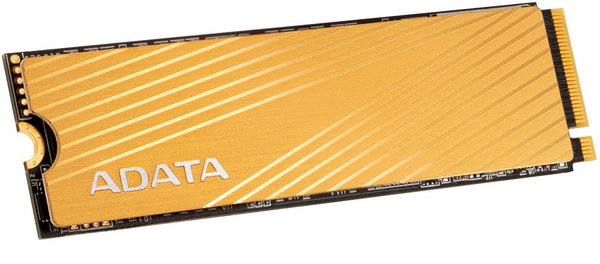INTRODUCTION

By surpassing their older 2.5" brothers both in performance since day one and as of now also in sales there seems to be no end in sight in the market for M.2 NVMe SSDs. What we didn't however have with 2.5" models were the vast differences/gaps in read & write performance levels something which we see a lot with M.2 NVMe solutions. For example, even though current 2.5" SATA 6Gb/s SSD models feature performance levels between 450-550MB/s current M.2 NVMe models feature performance levels ranging from 1000MB/s and all the way up to 4000MB/s. The good news is that for most uses there aren't significant real world benefits between mid and high-end models (at least not for consumers looking for the best price/performance ratio) which is why many manufacturers focus in the development of the former rather than the latter. The brand new ADATA Falcon M.2 NVME SSD is one such model and today I’ll be testing the 1TB variant.
Founded in May 2001, ADATA Technology Co., Ltd. is committed to providing top-notch memory solutions that enrich the customer’s digital life. The company’s dedication to integrity and professionalism has made ADATA the leading memory brand with the most award-winning product designs. Backed by technical expertise, state-of-the-art manufacturing facilities, and premium customer service, ADATA offers complete memory solutions including DRAM modules, USB flash drives, memory cards, solid state drives and portable hard drives.
The Falcon line of M.2 NVMe SSDs (currently available in 256GB/512GB/1TB/2TB capacities) is based on the DRAM-less RTS5762DL dual-core 8-channel NAND flash controller by Realtek (supports intelligent SLC caching, LDPC - Low Density Parity Check - error correcting technology and AES 256-bit hardware encryption) which is paired with the latest 96-layer BiCS4 3D-TLC NAND Flash by Micron. Now as many of you already know through the Host Memory Buffer (HMB) feature DRAM-less NAND flash controllers use some of your system's regular RAM (up to 65.5MB in this case, always according to ADATA) to cache mapping tables (remember that this feature is only supported on versions of Windows 10 launched from 2019 and beyond). The above configuration allows the Falcon M.2 NVME SSD by ADATA to reach up to 3100MB/s in sequential reads and 1500MB/s in sequential writes along with up to 180k random read/write IOPS. ADATA also reports an MTBF (meantime between failures) of 1.8 million hours with a max endurance of 150TBW for the 256GB model, 300TBW for the 512GB model, 600TBW for the 1TB model and 1200TBW for the 2TB model (a limited 5-year warranty is also in place).

 O-Sense
O-Sense







.png)

